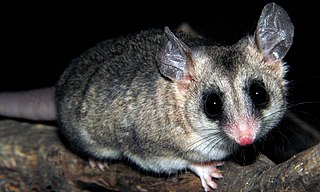The Emerald Tree Boa is extremely popular in zoos and private collections, but its life in the wild remains relatively unstudied. What little we have learned has come mainly from chance observations rather than long-term studies. Cryptic coloration, nocturnal ways and a life spent high in tropical forest canopies or dense brush has served to shroud their habits in mystery. But each bit of knowledge has helped us to better keep and breed this magnificent snake. For example, studies of the Emerald Tree Boa’s natural habitat have revealed the importance of providing captives with humid but airy enclosures, and temperatures that are somewhat lower than one might expect.
Range
Emerald Tree Boas are native to two distinct but adjacent areas of northern South America – the Guyana or Northern Shield region and the Amazon Basin. Individuals from each area differ somewhat in appearance, and some have suggested that 2 subspecies should be named. Corallus batesii has been proposed for the Amazon Basin population by those who believe that 2 distinct species are present.
Description: Differences between the Two Major Populations
Snakes from the Guyana Shield region, which encompasses parts of Surinam, Guyana, French Guiana and Venezuela, are light green in color (often described as “lime green”), and have noticeably larger head scales than do those further south.
The southern population inhabits those areas of Ecuador, Columbia, Peru, Bolivia and Brazil drained by the Amazon River. They tend to be a deep (emerald) green in color, and sport bright white and yellow makings. Anecdotal reports indicate that they grow larger, and are calmer in disposition, than their northern cousins. Females, typically larger than males, may reach 6 feet in length.
Habitat
Adults live in lowland rainforests, swamp forests and areas of dense secondary growth, often ascending to the canopy (please see photo). They most likely experience a wide range of temperatures, which may explain the tolerance (and even preference) for relatively low temperatures exhibited by many captives. Emerald Tree Boas have evolved in humid but well-ventilated habitats…those held in stagnant air conditions are prone to fungal diseases and other ailments.
Youngsters favor forest edges and clearings, where their bright coloration offers camouflage among flowering bushes and sunlit foliage. The juvenile coloration of reddish orange or various shades of brown becomes green-flecked by age 4 months. Highly arboreal, Emerald Tree Boas rarely descend to the ground.
Diet
Emerald Tree Boas are nocturnal ambush predators, relying upon sight and sensory pits (labial thermo-receptors) along the upper and lower jawline to detect prey. Limited field studies indicate that the adult diet is mainly comprised of arboreal rats, mice and other rodents and various opossums (please see photo of mouse opossum). Bats may be taken on occasion.
The teeth of large individuals may approach 2 inches in length – perhaps the longest, in relation to body size, of any non-venomous snake. It is often theorized that these formidable tools evolved to pierce the thick, overlapping feathers possessed by many birds. This certainly seems to “make sense”, and chicks have been favored by some individuals under my care, but stomach content studies have not confirmed that birds are an important food item. However, field research on this species is scant…perhaps we will learn more in the future.
Juveniles feed upon tree frogs, lizards and small rodents. Cannibalism has occurred in captivity, so it may be that snakes are sometimes included in the natural diet as well.
Reproduction
The breeding biology of free-living Emerald Tree Boas has not been studied. Observations of animals living in zoos indicate that most females give birth between April and July. Two years may elapse between births to a single female, and those with developing young have been known to fast for up to 3 months. Healthy captive females become sexually mature at age 3-4; males at age 4-5.
The young, typically 5-12 in number, are born alive. Litters of up to 20 have been recorded.
Further Reading
Natural History & Care of Rosy and Sand Boas
 That Reptile Blog – Reptile, Amphibian and Exotic Pet Care and Information
That Reptile Blog – Reptile, Amphibian and Exotic Pet Care and Information





